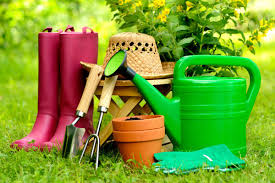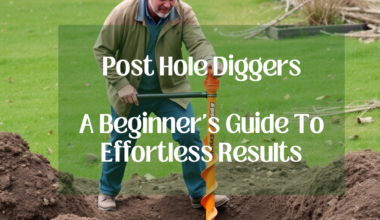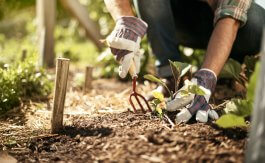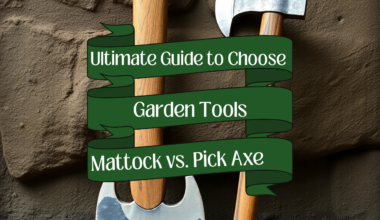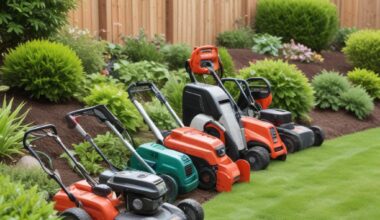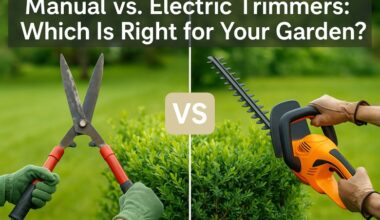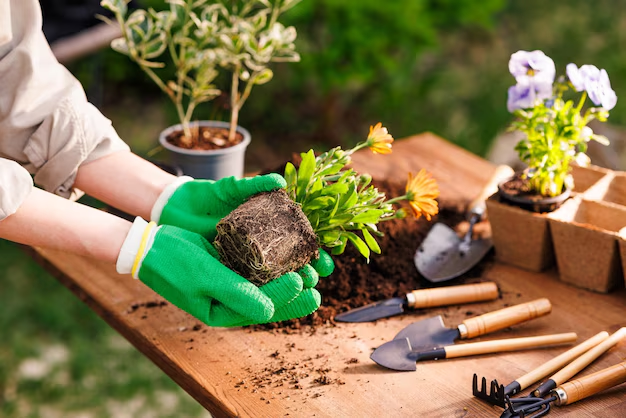
Table of Contents
Knowing the garden tools you should have can make all the difference in your gardening projects. Many beginners start planting flowers, setting up vegetable patches, or tidying their garden, only to realize halfway through that they’re missing a key tool.
Suddenly, what should have been a simple task becomes frustrating and time-consuming. This is a common challenge for new gardeners, not because they lack motivation, but because they haven’t yet identified which garden tools they should have to work efficiently.
The great news is that you don’t need every gadget on the market. A carefully chosen set of reliable, versatile tools can handle nearly every gardening task, from digging soil and transplanting seedlings to pruning shrubs and moving mulch.
By knowing which garden tools you should have, you can save time, reduce stress, and enjoy the process more.
In this guide, we’ll walk through the 10 must-have garden tools you should have, explain why each is essential, and provide practical tips for choosing durable, beginner-friendly tools that will last for years.
By the end, you’ll be ready to tackle your garden with confidence and ease.
The 10 Amazing Garden Tools You Should Have
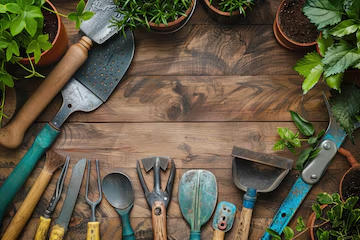
1. Hand Trowel

A hand trowel is the first tool every beginner gardener should own. It’s small but incredibly versatile. Use it to dig holes for seedlings, transplant flowers, and mix soil with fertilizers or compost. A hand trowel is perfect for precision work where larger tools would be cumbersome.
Buying tip: Look for a stainless-steel blade for long-lasting durability, and an ergonomic handle to reduce hand fatigue. Some trowels even come with measurement markings, which is a bonus when planting bulbs at the correct depth.
Pro Tip: Keep a small hand trowel in your potting area for indoor plants—it’s ideal for repotting houseplants or adding fertilizer to containers.
2. Pruning Shears (Secateurs)

Pruning shears are essential for maintaining plant health. These tools allow you to trim flowers, cut small branches, and shape shrubs, preventing overgrowth and encouraging healthy blooms.
Types:
- Bypass shears: Best for live plants. They cut cleanly and prevent crushing the stems.
- Anvil shears: Ideal for dead or woody branches.
Buying tip: Choose a pair with a safety lock and replaceable blades. Quality shears will stay sharp longer and make pruning easier.
Pro Tip: Always prune at a 45-degree angle for optimal healing and growth.
3. Garden Gloves
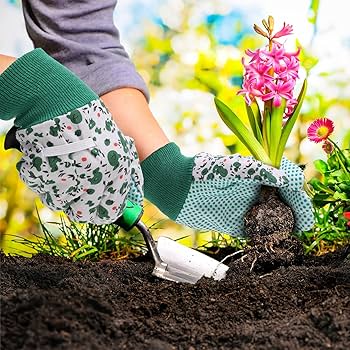
Though gloves might not feel like a “tool,” they’re essential protective gear. They protect your hands from thorns, sharp branches, dirt, and soil-borne bacteria. Gloves also improve grip, which is helpful when handling wet or heavy tools.
Buying tip: Look for breathable fabric, reinforced fingertips, and a snug fit. Leather gloves work well for heavy-duty tasks, while lightweight, flexible gloves are ideal for planting and delicate work.
Pro Tip: Keep two pairs: one for digging and one for pruning. This prevents wear and keeps gloves clean longer.
4. Spade

A spade is heavier-duty than a trowel and essential for digging, edging, and moving soil. Its flat blade is perfect for cutting clean lines in garden beds or moving soil without creating a mess.
Buying tip: Opt for a D-shaped handle for better leverage and a fiberglass or hardwood shaft for durability.
Pro Tip: Use a spade for transplanting shrubs it minimizes root damage better than a shovel.
5. Hoe
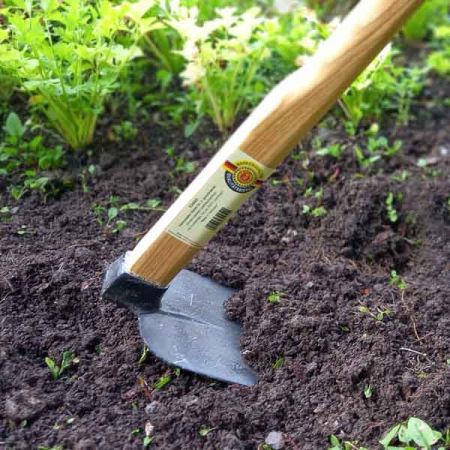
A hoe is indispensable for weeding, cultivating soil, and preparing planting rows. It breaks up compacted soil and loosens the surface, making it easier for seeds to grow.
Buying tip: Choose a lightweight hoe with a long handle to prevent back strain. For raised beds or smaller spaces, a short-handled hoe is easier to maneuver.
Pro Tip: Use a hoe at a shallow angle to slice weeds just below the surface without disturbing too much soil.
6. Garden Fork

A garden fork is ideal for turning compost, loosening soil, and lifting plants with minimal root damage. It’s stronger than a spade for heavy soil and helps aerate garden beds efficiently.
Buying tip: Look for forged steel tines for strength and rust resistance, and cushioned handles for comfort.
Pro Tip: Use the fork to mix compost into the top layer of your soil—it ensures nutrients are evenly distributed.
7. Rake
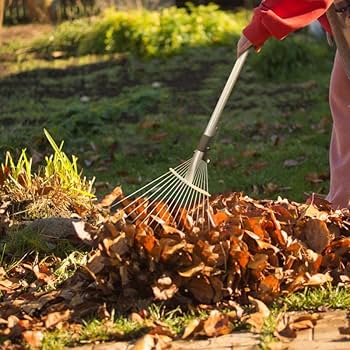
Rakes are versatile tools for both soil work and debris management. A metal rake can break up compacted soil or spread mulch evenly, while a leaf rake collects leaves, grass clippings, and small branches.
Buying tip: Adjustable rakes are ideal for beginners they adapt to wide areas or tight corners.
Pro Tip: Rake gently around plant roots to avoid damage while clearing debris.
8. Watering Can or Hose with Nozzle

Watering tools are essential for healthy plants. A watering can offers control for small pots and seedlings, while a hose with an adjustable nozzle covers larger areas efficiently.
Buying tip: Choose a lightweight metal watering can for indoor or patio plants. For outdoor watering, a kink-resistant hose with multiple spray settings is best.
Pro Tip: Water in the early morning or late afternoon to minimize evaporation and maximize absorption.
9. Wheelbarrow
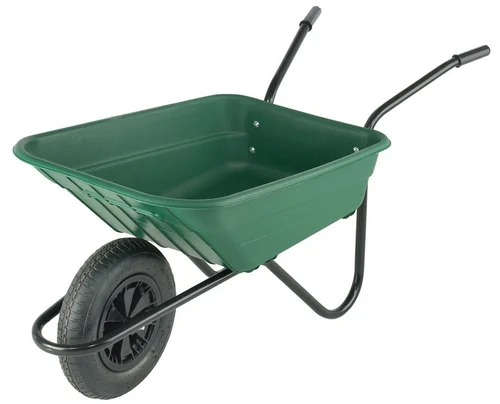
A wheelbarrow saves time and effort when moving soil, mulch, compost, or plants. It’s especially helpful for large gardens, reducing back strain and fatigue.
Buying tip: Single-wheel designs are easier to maneuver in tight spaces, while two-wheel versions offer stability on uneven ground. Pneumatic tires make transporting heavy loads smoother.
Pro Tip: Use a wheelbarrow to mix soil amendments on the go. Combine compost, sand, and garden soil in the tray for even distribution.
10. Loppers

Loppers are larger cutting tools for thick branches that are beyond the reach of pruning shears. They’re essential for maintaining trees and bigger shrubs.
Buying tip: Bypass loppers are best for live wood; anvil loppers are suited for dead branches. Extendable handles provide extra reach.
Pro Tip: Cut branches at a slight angle to allow water runoff and prevent rot.
Tool Care & Maintenance Tips
Investing in quality garden tools you should have is only the first step; maintaining them properly ensures they last for years and perform at their best. Proper care not only saves you money but also makes gardening safer and more enjoyable, especially for beginners who are still learning the ropes.
Clean tools after every use: After each gardening session, make it a habit to rinse off dirt, sap, and other debris. Use a stiff brush or mild soap for stubborn residues, then dry the tools thoroughly to prevent rust.
Clean tools not only look better but also function more efficiently, making your gardening work smoother.
Sharpen blades regularly: Dull blades can damage plants and make tasks harder than they should be. Tools like pruning shears, loppers, and spades benefit from regular sharpening with a sharpening stone or file.
Keeping your garden tools you should have sharp will help you cut cleanly and reduce strain on your hands.
Store tools properly: Proper storage is essential for extending the life of your tools. Hang long-handled tools on wall hooks in a dry shed or garage, and keep smaller items like trowels, gloves, and hand forks in a toolbox.
Organized storage prevents accidents and ensures you can quickly find the garden tools you should have whenever you need them.
Oil and protect metal parts: Lightly oiling blades and moving parts prevents rust, while applying linseed oil to wooden handles keeps them smooth and crack-free.
Regular maintenance protects your investment and ensures that your garden tools you should have remain reliable season after season.
By following these simple care tips, beginners can enjoy gardening without worrying about damaged tools, allowing every planting, pruning, or digging session to be efficient and stress-free.
Buying Guide for Beginners
Choosing the right garden tools you should have can feel overwhelming, especially with so many options available.
For beginners, it’s easy to get distracted by fancy gadgets and multitools that promise to do everything. However, focusing on a few high-quality, essential tools ensures that you’ll actually use them and enjoy your gardening experience.
Prioritize durability and comfort: When selecting garden tools you should have, durability should be your top priority. Look for tools made with strong materials like stainless steel or forged carbon steel.
These materials resist rust, hold up under heavy use, and require less frequent replacement. Comfort is equally important tools with ergonomic handles, cushioned grips, and balanced weight make gardening tasks easier and reduce strain on your wrists and hands.
Stainless steel vs. carbon steel: Stainless steel is resistant to rust and easy to clean, making it ideal for beginners who may occasionally forget maintenance.
Carbon steel is stronger and sharper, but requires more upkeep to prevent corrosion. Both types have their benefits, but for most beginner gardeners, investing in stainless steel garden tools you should have is a safer and lower-maintenance choice.
Focus on essentials, not quantity: You don’t need to buy every gardening gadget in the store. Begin with the core garden tools you should have hand trowel, pruning shears, gloves, a spade, a hoe, a garden fork, a rake, watering tools, a wheelbarrow, and loppers.
High-quality tools from this list will cover most gardening tasks and provide a foundation for expanding your collection later.
Test before you buy: Whenever possible, hold the tools in your hands before purchasing. The handle length, grip, and weight should feel natural.
What works for one gardener may not suit another, so comfort should always guide your choice. Remember, the right garden tools you should have not only make gardening easier but also more enjoyable, encouraging you to spend more time in your garden with confidence.
Conclusion: Start Your Gardening Journey with Confidence
Starting your first garden doesn’t need to be overwhelming. Focus on these 10 must-have garden tools to handle digging, planting, pruning, and watering with ease. The right tools save time, reduce effort, and make gardening enjoyable.
Which of these tools do you already own, and which ones are you planning to add to your shed? Share your thoughts in the comments. Your experience could help another beginner gardener!
If you found this guide useful, subscribe for more beginner-friendly gardening tips and share it with friends ready to start their gardening journey.
Together, we can make gardening simple, rewarding, and fun for everyone.
FAQs: Garden Tools You Should Have
1. What are the essential garden tools you should have as a beginner?
The essential garden tools you should have include a hand trowel, pruning shears, garden gloves, spade, hoe, garden fork, rake, watering tools, wheelbarrow, and loppers.
2. How do I choose the best garden tools you should have?
Focus on durability, ergonomic handles, and stainless steel construction when selecting the garden tools you should have.
3. How many garden tools should a beginner have?
A beginner should start with the 10 essential garden tools you should have to cover all basic gardening tasks.
4. How do I maintain the garden tools you should have?
Clean, dry, and oil your garden tools you should have after each use to prevent rust and keep them sharp.
5. Can I garden with just a few tools?
Yes! Even with a small set of garden tools you should have, like a trowel, shears, and spade, you can complete most beginner gardening tasks.
6. Are expensive garden tools necessary?
Not always. Prioritize quality over price when choosing garden tools you should have, ensuring they last and perform well.
7. Where should I store the garden tools you should have?
Store your garden tools you should have in a dry shed or garage to prevent rust and prolong their life.

